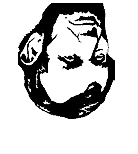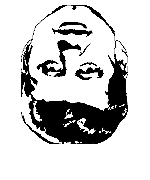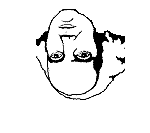 | Face Recognition |  |
 | Face Recognition |  |
|
The temporal lobe of the brain is
partly responsible for our ability to recognize faces. Some neurons
in the temporal lobe respond to particular features of faces. Some
people who suffer damage to the temporal lobe lose their ability to
recognize and identify familiar faces. This disorder is called prosopagnosia. When the appearance of a face is changed, neurons in the temporal lobe generate less activity. Here is an interesting experiment: Do you recognize the famous people in the pictures below? It may be difficult for you to recognize these people when they are upside-down. To identify these people, move your mouse so the cursor is over each picture. This will flip the pictures right-side up. | 
|
 |
 |
 |
 |
 |
|
|
|
| For more about face recognition, see:
|
 |
Take the FACE MEMORY TEST. There are two versions of the test: |
| BACK TO: | Exploring the Nervous System | Table of Contents |
![[email]](../gif/menue.gif) Send |
 Fill out survey |
 Get Newsletter |
 Search Pages |
 Donate to Neuroscience for Kids |